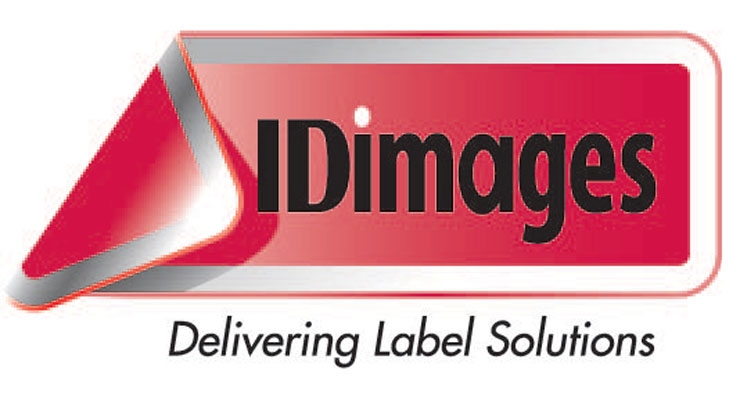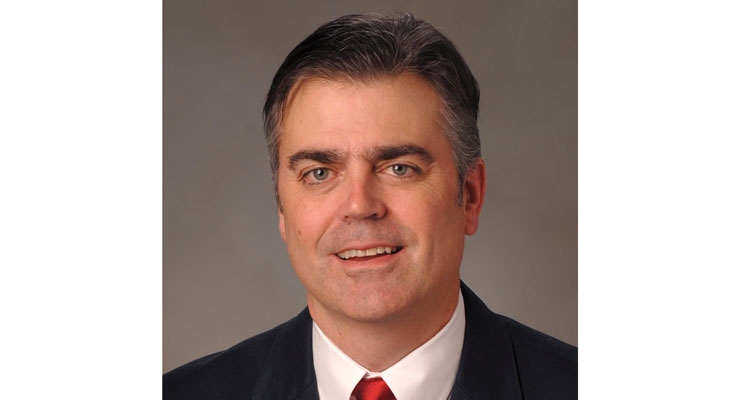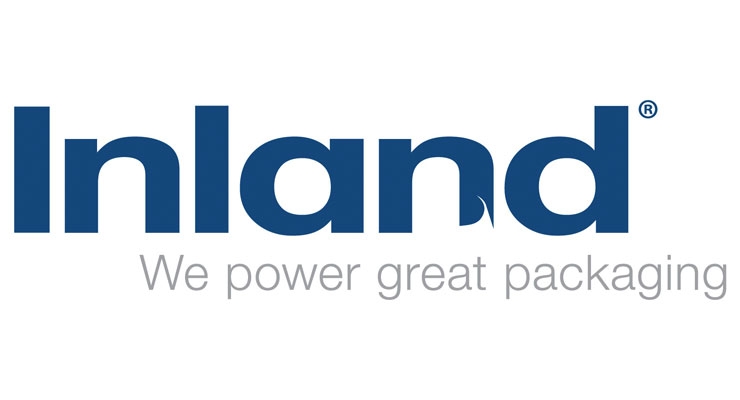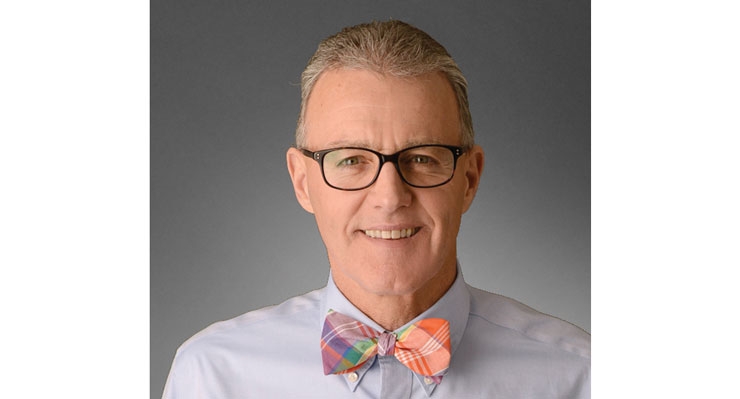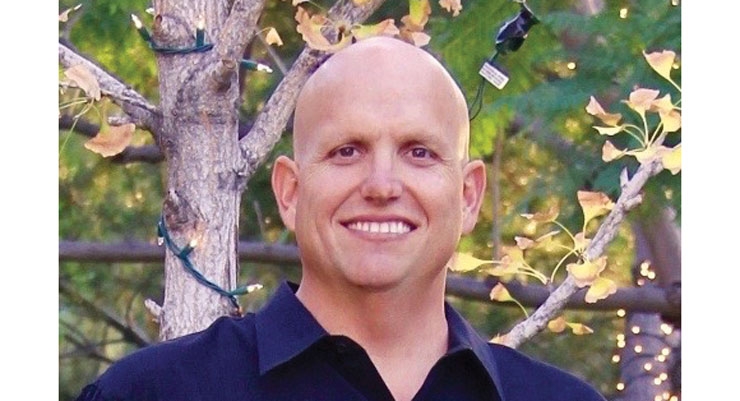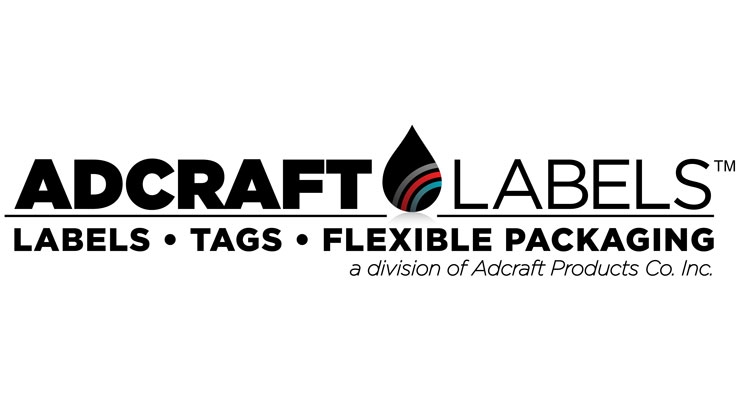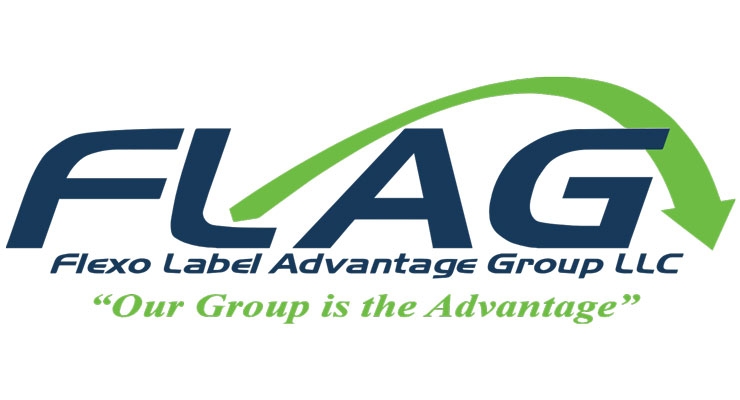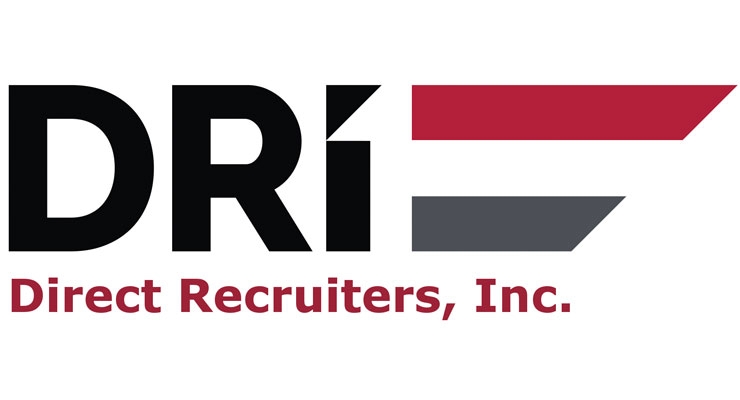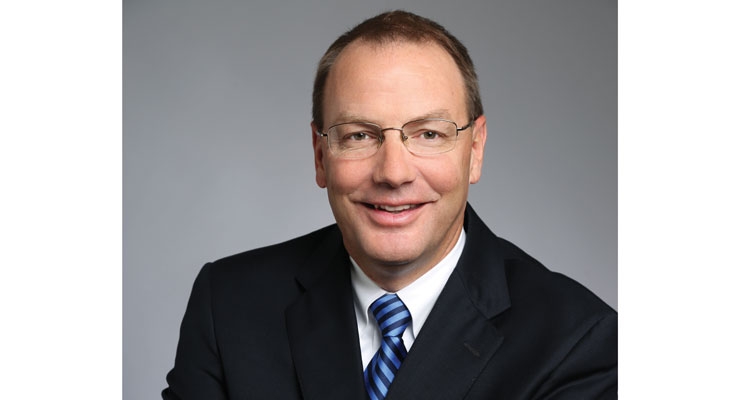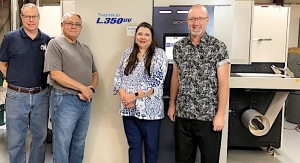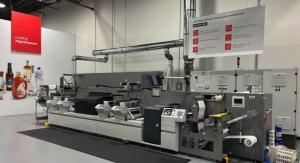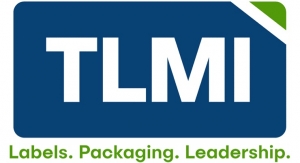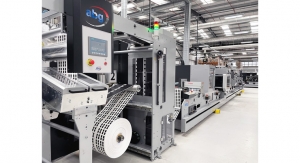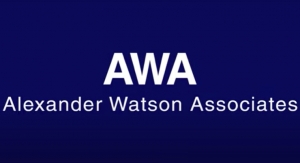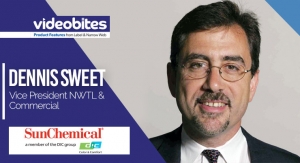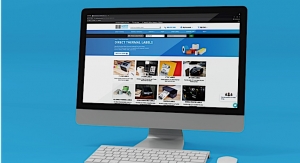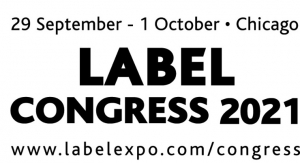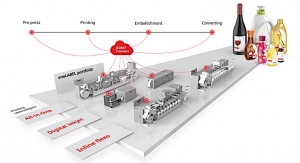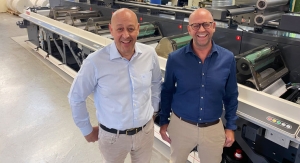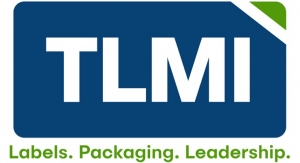Steve Katz, Editor07.13.18
Pricing, employment and workforce challenges, consolidation, sustainability, technology investments – these are just some economic topics that are top-of-mind for those running label companies, as well as other industry professionals. The industry is doing well, and it’s due in part to the aforementioned leaders staying on top the latest trends – and tackling challenges before they become problems. L&NW caught up with several company and industry leaders and asked them about some of the issues they are faced with at the mid-point of the year. Here’s what they had to say:
‘Pricing Games’
By Brian Gale, president, I.D. Images
Recently, a leading pressure sensitive materials supplier announced a substantial price increase. Depending on the product, increases range from 4% to 7%. Additionally, all freight charges are being increased by 5%. Increases in raw material and transportation costs are cited as the reasons for the increases. This is the second announced price increase we have received in the last six months. In the label world, the rest of the market typically follows once one supplier announces an increase.
I would love to be a fly on the wall in strategy sessions at Avery and their competitors. As I’ve written in the recent past, component costs for pressure sensitive materials have increased. There is a possibility of shortages, particularly among direct thermal products. Freight costs have gone through the roof. An objective observer would conclude a price increase is warranted.
However, competitive markets are not always rational. Spreadsheets and pretty graphs that show upward trends in costs and downward trends in margins are really nice to look at and tell a compelling, factual story justifying price increases. Customers moving business and idle capacity hit the hearts of sales people and executives. I can hear a salesperson screaming, “You can have revenue with a lower margin or zero revenue with zero margin!” Minds and hearts do not always agree.
It’s tough to “make it up in volume” when margins are declining. Losing volume is never fun and generally causes executives heartburn and/or job loss. Reality needs to set in. We are in an inflationary environment. Ignore it and eventually you will have to deal with the consequences.
As expected, the pressure sensitive label industry followed the aforementioned supplier’s price increase announcement. The cynic in me says a few of them just cut and pasted the exact same announcement. I wonder if Paul Manafort was involved!
It is certainly an interesting time. For whatever reason, the label industry is reluctant to raise prices. Prices only go up when raw material prices go up. Check out all of the commodities associated with labels. Every one of them – pulp, oil, resin, chemicals – is increasing. Freight has increased significantly. Since the last industry wide increase six and one half years ago, operating costs have gone up. No one is getting paid less. Benefits haven’t gone down. Is anyone paying less in rent? Despite these facts, many people in our industry were surprised by the increase announcement.
In most industries, price follows volume. In other words, when volume goes up, prices increase. That does not happen in the label industry. Volume has grown over the last six years, but prices trended down. Over the last few years, it seems like the only competitive tool the label industry has used is price. Competing solely on price does not create a healthy industry, especially when costs are rising. It does not require a PhD to understand that costs going up and prices going down leads to lower margins. If you cannot provide value, expect your margins to go down.
‘Empowering employees’
By Mark Glendenning, president and CEO, Inland
As a label and flexible packaging manufacturer, change is nothing new for Inland Packaging. Not only is the packaging industry in constant flux, each of the individual end-use markets that we supply continue to face change daily.
With dynamic markets come challenges and opportunities. The challenges that our customers and end-use markets face directly correlate to challenges Inland sees. As consumers change their preferences to single serve, or as they more frequently choose products with a matte finish label or package, all of these choices impact us – our supply chain, our manufacturing processes, and ultimately the type of talent and skill sets required of our staff.
As with most manufacturers today, recruiting talent and keeping the right team in place is one of the biggest challenges we face. The trade or skilled workforce continues to decline as most grads opt for a four-year+ degree or choose to work in other industries. Thus, it makes it difficult to find candidates to fill skilled-labor jobs.
Additionally, there is heavy competition for professional candidates as employees have more options than ever before and added benefits – incentive programs, growth and advancement opportunities, health and wellness programs, company culture and office environments – become a key factor in their decision-making.
Inland is doing our part to combat these challenges in a variety of ways. As an employer, we can either choose to succumb to these challenges, or we can use these challenges as an opportunity to improve. We are family owned and take pride in that fact. We have an entrepreneurial culture that empowers employees to find opportunities for improvement and lead the charge to make it happen. We have a strong internship program that has proven to turn out long-term, loyal employees. We promote from within, and continue to improve and develop our employee growth and engagement programs.
We support and partner with our local high schools and technical colleges, working together to create programs that set students up for long-term success. Showing them their career trajectory up front allows students to see the path they can take without needing a four-year+ degree.
Having an engaged team that is empowered to see opportunities and initiate positive change for our organization is imperative to our long-term success. Being agile through our staff engagement allows us to keep up with the dynamic markets in which we play.
We have high expectations of our employees regardless of the position they hold. Everyone on our team has a significant impact on our customers and our success. All of our employees participate in and benefit from Inland’s success, which only further fuels positive change.
Our industry needs to continue to face these challenges head on. Support education in the skilled trades and support programs that encourage students to choose jobs in technical fields. We have to promote our industry as one that is evolving, challenging and ripe with opportunity.
‘Helping clients stand out in a changing market’
By Micheal Lane, CEO, Meyers
Shoppers don’t shop the way they used to. They buy more online, and when they go to the store, they expect more from the experience. While brick-and-mortar retail isn’t going away, it is changing, and it’s clearer than ever that brands and the companies that work with them need to understand those changes.
Consider the grocery store. With shoppers – and younger shoppers in particular – increasingly gravitating to the outer edge of the store for fresh produce, meat and bread, foot traffic is down in the center aisles. People still shop for cereal and peanut butter and potato chips but reduced traffic at the center of the store means brands must maximize the opportunities they have to get a shopper’s attention.
That’s why making a good first impression with product packaging matters. If you’re a tried-and-true brand, can you add a foil or use a clear label material to freshen your look? If you’re a new entry to the market, maybe a holographic material or a unique substrate will help your label pop and make it clear you’re a fresh alternative to the more familiar standbys.
Sometimes, making an impact means looking beyond labels and considering the entire shopping experience. Signage, shelf danglers and point-of-purchase displays help make an impression, but expanding beyond the label requires color consistency across a variety of substrates and printing processes. As a printer, that means working behind the scenes to ensure consistent results for all projects.
The shopping experience also increasingly extends beyond the store. At Meyers, we have worked with clients to leverage sweepstakes, promotions and loyalty programs to help them go beyond labels and create a connection with customers. All of these strategies can help build a relationship and strengthen a shopper’s loyalty.
The technology exists to create unique experiences – both on labels and beyond – that help a brand stand out in the marketplace. It is up to the salespeople who engage with product managers to be up-to-date on the latest ideas and innovations and be prepared to showcase them in a manner that gets a packaging engineer or merchandiser’s interest.
Another area of significant change is in-store brand labels. The entrance of low-cost options, like Aldi, to the marketplace has created a downward pressure on pricing that has bigger retailers paying more attention than ever to their private labels. That creates an opportunity to work with those retailers to help them develop their brand and give their labels more panache on the shelf.
These lessons don’t apply only in the grocery store. As shopper behavior evolves, there are opportunities everywhere to help brands build relationships with consumers as long as we understand the tools available to us and the best ways to use them.
Despite challenges, ‘We see great opportunities’
By Keith Mottram, president and CEO, Adcraft Labels
We are happy that our economy is on a growth cycle once again. Adcraft Labels, like most other label companies, is seeing growth in most of the markets we service. In typical fashion, with consumers feeling confident in our economy, spending is increasing. As reported by the US Census Bureau for Retail and Food Services, advanced estimates are showing that consumers are spending 5.9% over a year ago. In that 5.9%, non-store retailers’ sales, like Amazon, were up 9.1% from last year. Along with this, our 3.8% national unemployment rate is the lowest it has been in the last 10 years.
This is good news, but along with this growth there are ongoing and increasing challenges that face us. The costs of doing business are growing. Raw material costs, labor force changes, and logistics costs are all increasing and can erode our profit margins. We have incurred two industry-wide material increases in the past six months, and it is rumored that a third is on the horizon for Q4 due to the massive volatility with resin pricing. Along with these increases and challenges, the market is demanding better ways to stand out and even specialize or personalize brands to various target demographics.
We have a changing workforce that has a different way of thinking about work and careers. The change in the way our labor force thinks affects the decision-makers who buy our products. Out with the old and in with the new, as it always goes with progress. This, I feel, is greatly accelerated due to the internet and the use of social media. Old thinking and how we approach and manage business and people must change with the times.
With regards to sales and marketing, Adcraft is targeting both mindsets, old and new. So we do research, lots of research, to learn new trends and triggers to help train our sales and marketing teams. This allows us to relate more effectively to our target markets. We utilize segmentation within our marketing campaigns to personalize and target the proper audience and increase response.
Regarding our challenges with labor and a changing workforce, we work hard to create a positive, solutions-oriented culture. Some of the things we do for the team to help create a great culture include simple things, like a company family picnic, or taking the whole team to the Angels vs. Dodgers game. We keep the team informed with our “State of the Company” lunch every month. Adcraft does a lot of activities that get us all together “off the job” with the main ingredient being “fun.” We are finding that with a positive and healthy culture, our team is more effective and quality-oriented, resulting in lower waste and rework. We have been fortunate, as we expect a lot from our team members, and they consistently deliver.
It is no news that we need to keep pace with advancing technology and the never-ending need for a more efficient process. However, I feel today’s marketplace is even faster-paced then just five years ago. Technology itself is growing at a more rapid pace, for sure. With this, more companies are poised to compete in our space, creating a need to differentiate our product offerings and services. In turn, our clients are trying to differentiate, as well as capture their target markets. Clients are requesting ways to implement segmentation and personalization of a brand to help drive their sales.
One way we have dealt with this request, as well as addressing the increasing costs, is by investing in equipment along with our great people. Adcraft has added a digital printing department that includes capabilities to efficiently deliver highly-decorated labels in one pass. We have the ability to personalize products and target segments of a market that previously would have taken multiple passes on different pieces of equipment. Now, we run these labels in one pass on our Jetflex Digital Flexo Hybrid Press, providing a more efficient, highly decorated product. Also, we have installed a short-run digital solution, the Mark Andy Digital One press. This press opens short run and fast-turn options for our clients, so we can service all of their label and film needs effectively and efficiently.
While the previously mentioned cost increases are affecting us, they obviously are also affecting our clients. Whether we can absorb some or all of a cost increase on various materials, none of us can sustain an acceptable profit without passing some of the costs on to our clients or end users. Whether you provide ingredients, components, labels or films, there will be some percentage of work that requires market adjustment passed to your clients. Cost increases cause clients to start looking for savings anywhere they can. Product compliance or compatibility issues can be a challenge when a client starts seeking savings. We, as vendors, must be aware of the overall potential effect.
It is almost a certainty that one or more of the components of a product line are likely to be hit with an increase. When this happens, the client may start searching for savings on your or other components required to create the product. Without the proper testing, any changed component can create a failure on the product. In the past, I have seen clients make this mistake and cause a rejection due to a compatibly issue. At Adcraft Labels, we take the time to bring our experience to our clients, so they may avoid the pitfalls of blindly substituting parts of a product line without a complete overview or disclosure to the vendors involved.
We see great opportunities in this growing market. Adcraft Labels is looking forward to what comes next with technology and utilizing it to help our clients with their goals and growth.
‘Rising to the Sustainability Challenge’
By Jared Powell, principal at Frontier Label
Packaging contributes 29 million tons of waste annually, and that’s in the United States alone. Fortunately, one area that some packaging and labeling brands are getting ahead in is sustainability. There’s been a shift of focus onto greener and more eco-friendly solutions with companies offering more sustainable alternatives such as recyclable options or products made from recycled resources. However, there are other, more counterintuitive ways to tackle the problem we’re facing.
While recycled and recyclable materials have enjoyed the spotlight, one of the lesser-known routes that label and packaging companies are taking is the rock paper route. Rock paper, made from calcium carbonate and resin, has proven sustainable, waterproof and durable, all while giving a “paper” feel to a product, but without the avoidable waste. Lots of companies in the beverage, food, pet, health and beauty industries are incorporating this material and other innovative options to deliver on consistency while reducing the waste created by paper that doesn’t always get recycled.
A sometimes overlooked, but increasingly important aspect of the labeling process is color choice. In fact, just being aware of the implications of inks and dyes can help reduce unnecessary pollution and waste. For example, black ink is powerful and takes less to create a rich design. Additionally, restricting the amount of colors used and cutting back on color blending helps create a more sustainable, finished product – something labeling and packaging companies have taken note of.
Another practice being seen more frequently is combining orders strategically. Prepress and graphics teams will oftentimes combine orders that have the same specifications when possible. Another route to take is in enabling clients to order multiple requests as a single, larger order. This not only saves the client money, but improves efficiency by reducing setup costs and giving a bulk price savings with a greener footprint.
Beyond the typical recycled material and recyclable products, the state of labeling and packaging is becoming more aware of creating sustainable collateral. Companies and brands are becoming more knowledgable and innovative by using out-of-the-box alternatives to the usual materials, thus creating less waste.
‘The Backbone of the industry’
By John McKay, president and founder, FLAG
FLAG (Flexo Label Advantage Group) is a valuable community made up of small-to-medium sized independent label converter members and world-class vendor partners, which gives us two unique perspectives into the challenges, needs and opportunities of each. While both rely on each other as partners, they come from different angles, which FLAG recognizes and works on daily, providing advantages for their success.
A recent internal FLAG survey identified that several business challenges were the same for both our members and vendor partners: new sales; finding, qualifying and hiring good people; keeping good employees; price increases; inflation; delivery expectations and meeting customer demands. In fact, these challenges would probably be stated by businesses in many different industries.
FLAG members, who average in company size between $2 million to $20 million, also highlighted issues more specific to independent converters, such as: Training younger people to replace an aging workforce; employee morale and accountability; cash for capital expenditures; forecasting the next move to meet market demands; keeping up with changing technologies; production efficiencies and related metrics; maintaining a family business culture when growing; healthcare costs and succession planning. To help our members realize that they are not alone in facing those issues, FLAG developed a 24/7 online forum, which actually grew out of our Annual Members Meeting roundtable discussions, where topics like these are regularly addressed among FLAG member peers.
Consolidation of the overall printing industry has been dramatic for the last 10-15 years. Overcapacity and productivity advancements such as digital printing have reduced the number of printing companies, manufacturers and suppliers in all print segments. Hardest hit initially were newspapers, followed by offset printing. That trend, for many of the same reasons, is now starting to affect the label-printing segment. The independent label converter, like their independent cousins in newspapers and offset, will be challenged the most. It’s hard for independent converters to compete against larger converters, who are expanding down market. Larger converters generally have lower costs on materials, supplies, services, support and new equipment purchases; a wider employee knowledge base of experience to draw on; more vendor influence for additional resources; and the ability for multi-location output for specific customer needs or catastrophic backup capabilities.
Independent converters are the backbone of the label industry. The ability to react quickly to customer or market demands favors the independent converter. Since 2010, FLAG has been very successful helping independent converters reduce costs to be more competitive with larger converters, along with providing advantages and resources that help make them stronger companies overall, without sacrificing their independence.
Despite the challenges and issues facing the label industry, there is good news. Our economy is growing and overall small business optimism is strong. This should provide label converters with new sales opportunities along with expanding capabilities into flexible packaging, shrink and increased digital capacity.
Employees: ‘Mission-Critical Assets’
By Dan Miller, director, Direct Recruiters, Inc.
As an executive recruiting firm that focuses on the label and narrow web industry, Direct Recruiters works with suppliers and converters exclusively every day. The health of the job market is obviously an important part of our day-to-day activity. With a 3.8% unemployment rate, it’s no mystery that finding talent is a struggle. There are two basic relationships we focus on for growth: retention and hiring. Let’s take a look at both.
Employee Retention: Are your employees engaged? The top reasons we’re typically given for people leaving an employer are: not getting along with a supervisor, not seeing a clear next step in their career, and fear of a change in their compensation plan. Are you constantly seeking input from your front-line employees and acting on it? Are you following up on organizational changes? Are your managers receiving 360-degree feedback? The best places to work didn’t become so by accident! It takes hard work and consistent communication throughout your organization. Treat your employees as mission-critical assets that are constantly being courted by your competitors.
Adding to the Team: When unemployment is down, wages tend to rise. People will need two compelling reasons to join your organization: Money and “Everything Else, But Money.” In the “Everything Else” category, it’s important to remember that most of the reasons people move are not money-related. Find out which of your strengths play to the candidate and let them shine!
Keep in mind that you’re going to ask a candidate to make a big decision on very little information. Candidates will be watching for even the smallest warning signs – people not smiling in the hallways and saying “hello,” hiring managers that are late to, or miss, interviews, lapses in communication, etc. It is important to be aware of these things in order to make the best impression on high-demand candidates.
With regards to money, put your best foot forward from the start. Candidates will naturally still want to negotiate, but the average candidate is looking at somewhere between 2-3 offers. It’s important to let them know you’re serious and you want them on your team.
A few other things to keep in mind: We’ve seen a number of employers in the label industry struggle when trying to make another country/culture’s compensation model work in the US. Do you market to your clients the same way in every country? Then why do you market to your employees that way?!
Recession will come – it always does. It’s easy to ignore the weak links on your team in a good economy, but the return you’ll see in recession by making sure your team is packed with all-stars today is immeasurable. You’ll need the best talent in the marketplace when the economy slows.
Finally, with regard to the aging workforce, there’s no amount of recruiting power that can fix it. Find college graduates with relevant degrees and teach them the business, or find talent from other relevant industries. I often get asked, “But what happens when we put in all this effort and they leave?” Candidates leave every day, but the industry won’t survive unless someone is willing to take that leap of faith.
New Direction Partners, founded in 2009, leverages its collective years of industry experience to work with business owners, offering a variety of services. Its partners and directors have closed more than 300 transactions. New Direction Partners typically represents sellers in business transactions. The organization also conducts acquisition searches for potential buyers, offers valuation and strategic planning services, and has expertise in capital formation and financing. L&NW caught up with New Direction partner Jim Russell and got his thoughts on the state of M&A activity in the label market.
L&NW: How would you describe the current M&A climate within the label industry? Who is buying and who is selling?
JR: The current M&A climate is very strong, particularly in the packaging area. The label market is attractive to buyers today. Private equity firms are interested in labels, as are other strategic buyers. I would describe it as very positive. Another strength is that in the past few years, an increasing number of commercial printers got into large format; it was a wave over the last four to five years. And we are now starting to see commercial printers get into flexo – not to the extent they did with large format, but we are seeing it. At least three to four plants have done that in the last few years, and that number will continue to grow. Some will be organic; some will be through acquisitions to gain the expertise they need. According to Smithers Pira, about 6% of label production is now digital, with that percentage continuing to grow, and that will make label production easier to enter, and especially address the growing demand for shorter run, small lot labels. It’s not clear, however, that is where commercial printers would start if they were entering the market from scratch. But digital printing could make it easier for completely new entrants to the market.
For new entrants into the label market, whether by acquisition or organically, it doesn’t necessarily require extra equipment. But there is a bit of a learning curve to fully understand substrates, adhesives, what sticks to what, and a whole set of different requirements from traditional digital printing, including, in some cases, structural engineering expertise. That is a primary reason that entering the market through an acquisition is more attractive than starting up from scratch. It should also be kept in mind that it is a huge risk for marketers to change providers in packaging. It doesn’t pay to try to save a few nickels by moving to a new provider if the labels are not consistent and don’t adhere properly.
L&NW: What is driving M&A activity in the label market?
JR: In commercial print, consolidation is driving mergers and acquisitions. But I don’t believe many label companies are for sale. This means sellers will get a premium, and buyers will have to pay a premium. Assuming a label company is profitable, it can see a multiple of 5 to 6, where a commercial printer would be 4 to 5. For smaller label companies, a buyer would most likely be a larger commercial printer looking to expand its offerings. For a larger label company, a private equity firm or other strategic buyer is more likely to be interested, as it is a strong, stable market that is less prone to fluctuation when the economy changes. Flexible packaging or folding carton converters might also want to expand their offerings by acquiring a label company.
L&NW: What makes for a successful label industry M&A?
JR: It’s really the same as any M&A. You need cultural alignment, and you need compatibility in sales staff. You also want to look at how the client base lines up. For a commercial printer or private equity buyer, the owner of the label company needs to stick around for 2-3 years. Like any business, companies looking to be acquired should have a good succession plan in place.
L&NW: Are there any notable challenges affecting potential label industry mergers and acquisitions? How can they be overcome?
JR: Generally speaking, a dramatic downturn in the economy may not affect the label industry as much as other industry segments, but macroeconomic conditions could affect the buyers’ ability to finance.
‘Pricing Games’
By Brian Gale, president, I.D. Images
Recently, a leading pressure sensitive materials supplier announced a substantial price increase. Depending on the product, increases range from 4% to 7%. Additionally, all freight charges are being increased by 5%. Increases in raw material and transportation costs are cited as the reasons for the increases. This is the second announced price increase we have received in the last six months. In the label world, the rest of the market typically follows once one supplier announces an increase.
I would love to be a fly on the wall in strategy sessions at Avery and their competitors. As I’ve written in the recent past, component costs for pressure sensitive materials have increased. There is a possibility of shortages, particularly among direct thermal products. Freight costs have gone through the roof. An objective observer would conclude a price increase is warranted.
However, competitive markets are not always rational. Spreadsheets and pretty graphs that show upward trends in costs and downward trends in margins are really nice to look at and tell a compelling, factual story justifying price increases. Customers moving business and idle capacity hit the hearts of sales people and executives. I can hear a salesperson screaming, “You can have revenue with a lower margin or zero revenue with zero margin!” Minds and hearts do not always agree.
It’s tough to “make it up in volume” when margins are declining. Losing volume is never fun and generally causes executives heartburn and/or job loss. Reality needs to set in. We are in an inflationary environment. Ignore it and eventually you will have to deal with the consequences.
As expected, the pressure sensitive label industry followed the aforementioned supplier’s price increase announcement. The cynic in me says a few of them just cut and pasted the exact same announcement. I wonder if Paul Manafort was involved!
It is certainly an interesting time. For whatever reason, the label industry is reluctant to raise prices. Prices only go up when raw material prices go up. Check out all of the commodities associated with labels. Every one of them – pulp, oil, resin, chemicals – is increasing. Freight has increased significantly. Since the last industry wide increase six and one half years ago, operating costs have gone up. No one is getting paid less. Benefits haven’t gone down. Is anyone paying less in rent? Despite these facts, many people in our industry were surprised by the increase announcement.
In most industries, price follows volume. In other words, when volume goes up, prices increase. That does not happen in the label industry. Volume has grown over the last six years, but prices trended down. Over the last few years, it seems like the only competitive tool the label industry has used is price. Competing solely on price does not create a healthy industry, especially when costs are rising. It does not require a PhD to understand that costs going up and prices going down leads to lower margins. If you cannot provide value, expect your margins to go down.
‘Empowering employees’
By Mark Glendenning, president and CEO, Inland
As a label and flexible packaging manufacturer, change is nothing new for Inland Packaging. Not only is the packaging industry in constant flux, each of the individual end-use markets that we supply continue to face change daily.
With dynamic markets come challenges and opportunities. The challenges that our customers and end-use markets face directly correlate to challenges Inland sees. As consumers change their preferences to single serve, or as they more frequently choose products with a matte finish label or package, all of these choices impact us – our supply chain, our manufacturing processes, and ultimately the type of talent and skill sets required of our staff.
As with most manufacturers today, recruiting talent and keeping the right team in place is one of the biggest challenges we face. The trade or skilled workforce continues to decline as most grads opt for a four-year+ degree or choose to work in other industries. Thus, it makes it difficult to find candidates to fill skilled-labor jobs.
Additionally, there is heavy competition for professional candidates as employees have more options than ever before and added benefits – incentive programs, growth and advancement opportunities, health and wellness programs, company culture and office environments – become a key factor in their decision-making.
Inland is doing our part to combat these challenges in a variety of ways. As an employer, we can either choose to succumb to these challenges, or we can use these challenges as an opportunity to improve. We are family owned and take pride in that fact. We have an entrepreneurial culture that empowers employees to find opportunities for improvement and lead the charge to make it happen. We have a strong internship program that has proven to turn out long-term, loyal employees. We promote from within, and continue to improve and develop our employee growth and engagement programs.
We support and partner with our local high schools and technical colleges, working together to create programs that set students up for long-term success. Showing them their career trajectory up front allows students to see the path they can take without needing a four-year+ degree.
Having an engaged team that is empowered to see opportunities and initiate positive change for our organization is imperative to our long-term success. Being agile through our staff engagement allows us to keep up with the dynamic markets in which we play.
We have high expectations of our employees regardless of the position they hold. Everyone on our team has a significant impact on our customers and our success. All of our employees participate in and benefit from Inland’s success, which only further fuels positive change.
Our industry needs to continue to face these challenges head on. Support education in the skilled trades and support programs that encourage students to choose jobs in technical fields. We have to promote our industry as one that is evolving, challenging and ripe with opportunity.
‘Helping clients stand out in a changing market’
By Micheal Lane, CEO, Meyers
Shoppers don’t shop the way they used to. They buy more online, and when they go to the store, they expect more from the experience. While brick-and-mortar retail isn’t going away, it is changing, and it’s clearer than ever that brands and the companies that work with them need to understand those changes.
Consider the grocery store. With shoppers – and younger shoppers in particular – increasingly gravitating to the outer edge of the store for fresh produce, meat and bread, foot traffic is down in the center aisles. People still shop for cereal and peanut butter and potato chips but reduced traffic at the center of the store means brands must maximize the opportunities they have to get a shopper’s attention.
That’s why making a good first impression with product packaging matters. If you’re a tried-and-true brand, can you add a foil or use a clear label material to freshen your look? If you’re a new entry to the market, maybe a holographic material or a unique substrate will help your label pop and make it clear you’re a fresh alternative to the more familiar standbys.
Sometimes, making an impact means looking beyond labels and considering the entire shopping experience. Signage, shelf danglers and point-of-purchase displays help make an impression, but expanding beyond the label requires color consistency across a variety of substrates and printing processes. As a printer, that means working behind the scenes to ensure consistent results for all projects.
The shopping experience also increasingly extends beyond the store. At Meyers, we have worked with clients to leverage sweepstakes, promotions and loyalty programs to help them go beyond labels and create a connection with customers. All of these strategies can help build a relationship and strengthen a shopper’s loyalty.
The technology exists to create unique experiences – both on labels and beyond – that help a brand stand out in the marketplace. It is up to the salespeople who engage with product managers to be up-to-date on the latest ideas and innovations and be prepared to showcase them in a manner that gets a packaging engineer or merchandiser’s interest.
Another area of significant change is in-store brand labels. The entrance of low-cost options, like Aldi, to the marketplace has created a downward pressure on pricing that has bigger retailers paying more attention than ever to their private labels. That creates an opportunity to work with those retailers to help them develop their brand and give their labels more panache on the shelf.
These lessons don’t apply only in the grocery store. As shopper behavior evolves, there are opportunities everywhere to help brands build relationships with consumers as long as we understand the tools available to us and the best ways to use them.
Despite challenges, ‘We see great opportunities’
By Keith Mottram, president and CEO, Adcraft Labels
We are happy that our economy is on a growth cycle once again. Adcraft Labels, like most other label companies, is seeing growth in most of the markets we service. In typical fashion, with consumers feeling confident in our economy, spending is increasing. As reported by the US Census Bureau for Retail and Food Services, advanced estimates are showing that consumers are spending 5.9% over a year ago. In that 5.9%, non-store retailers’ sales, like Amazon, were up 9.1% from last year. Along with this, our 3.8% national unemployment rate is the lowest it has been in the last 10 years.
This is good news, but along with this growth there are ongoing and increasing challenges that face us. The costs of doing business are growing. Raw material costs, labor force changes, and logistics costs are all increasing and can erode our profit margins. We have incurred two industry-wide material increases in the past six months, and it is rumored that a third is on the horizon for Q4 due to the massive volatility with resin pricing. Along with these increases and challenges, the market is demanding better ways to stand out and even specialize or personalize brands to various target demographics.
We have a changing workforce that has a different way of thinking about work and careers. The change in the way our labor force thinks affects the decision-makers who buy our products. Out with the old and in with the new, as it always goes with progress. This, I feel, is greatly accelerated due to the internet and the use of social media. Old thinking and how we approach and manage business and people must change with the times.
With regards to sales and marketing, Adcraft is targeting both mindsets, old and new. So we do research, lots of research, to learn new trends and triggers to help train our sales and marketing teams. This allows us to relate more effectively to our target markets. We utilize segmentation within our marketing campaigns to personalize and target the proper audience and increase response.
Regarding our challenges with labor and a changing workforce, we work hard to create a positive, solutions-oriented culture. Some of the things we do for the team to help create a great culture include simple things, like a company family picnic, or taking the whole team to the Angels vs. Dodgers game. We keep the team informed with our “State of the Company” lunch every month. Adcraft does a lot of activities that get us all together “off the job” with the main ingredient being “fun.” We are finding that with a positive and healthy culture, our team is more effective and quality-oriented, resulting in lower waste and rework. We have been fortunate, as we expect a lot from our team members, and they consistently deliver.
It is no news that we need to keep pace with advancing technology and the never-ending need for a more efficient process. However, I feel today’s marketplace is even faster-paced then just five years ago. Technology itself is growing at a more rapid pace, for sure. With this, more companies are poised to compete in our space, creating a need to differentiate our product offerings and services. In turn, our clients are trying to differentiate, as well as capture their target markets. Clients are requesting ways to implement segmentation and personalization of a brand to help drive their sales.
One way we have dealt with this request, as well as addressing the increasing costs, is by investing in equipment along with our great people. Adcraft has added a digital printing department that includes capabilities to efficiently deliver highly-decorated labels in one pass. We have the ability to personalize products and target segments of a market that previously would have taken multiple passes on different pieces of equipment. Now, we run these labels in one pass on our Jetflex Digital Flexo Hybrid Press, providing a more efficient, highly decorated product. Also, we have installed a short-run digital solution, the Mark Andy Digital One press. This press opens short run and fast-turn options for our clients, so we can service all of their label and film needs effectively and efficiently.
While the previously mentioned cost increases are affecting us, they obviously are also affecting our clients. Whether we can absorb some or all of a cost increase on various materials, none of us can sustain an acceptable profit without passing some of the costs on to our clients or end users. Whether you provide ingredients, components, labels or films, there will be some percentage of work that requires market adjustment passed to your clients. Cost increases cause clients to start looking for savings anywhere they can. Product compliance or compatibility issues can be a challenge when a client starts seeking savings. We, as vendors, must be aware of the overall potential effect.
It is almost a certainty that one or more of the components of a product line are likely to be hit with an increase. When this happens, the client may start searching for savings on your or other components required to create the product. Without the proper testing, any changed component can create a failure on the product. In the past, I have seen clients make this mistake and cause a rejection due to a compatibly issue. At Adcraft Labels, we take the time to bring our experience to our clients, so they may avoid the pitfalls of blindly substituting parts of a product line without a complete overview or disclosure to the vendors involved.
We see great opportunities in this growing market. Adcraft Labels is looking forward to what comes next with technology and utilizing it to help our clients with their goals and growth.
‘Rising to the Sustainability Challenge’
By Jared Powell, principal at Frontier Label
Packaging contributes 29 million tons of waste annually, and that’s in the United States alone. Fortunately, one area that some packaging and labeling brands are getting ahead in is sustainability. There’s been a shift of focus onto greener and more eco-friendly solutions with companies offering more sustainable alternatives such as recyclable options or products made from recycled resources. However, there are other, more counterintuitive ways to tackle the problem we’re facing.
While recycled and recyclable materials have enjoyed the spotlight, one of the lesser-known routes that label and packaging companies are taking is the rock paper route. Rock paper, made from calcium carbonate and resin, has proven sustainable, waterproof and durable, all while giving a “paper” feel to a product, but without the avoidable waste. Lots of companies in the beverage, food, pet, health and beauty industries are incorporating this material and other innovative options to deliver on consistency while reducing the waste created by paper that doesn’t always get recycled.
A sometimes overlooked, but increasingly important aspect of the labeling process is color choice. In fact, just being aware of the implications of inks and dyes can help reduce unnecessary pollution and waste. For example, black ink is powerful and takes less to create a rich design. Additionally, restricting the amount of colors used and cutting back on color blending helps create a more sustainable, finished product – something labeling and packaging companies have taken note of.
Another practice being seen more frequently is combining orders strategically. Prepress and graphics teams will oftentimes combine orders that have the same specifications when possible. Another route to take is in enabling clients to order multiple requests as a single, larger order. This not only saves the client money, but improves efficiency by reducing setup costs and giving a bulk price savings with a greener footprint.
Beyond the typical recycled material and recyclable products, the state of labeling and packaging is becoming more aware of creating sustainable collateral. Companies and brands are becoming more knowledgable and innovative by using out-of-the-box alternatives to the usual materials, thus creating less waste.
‘The Backbone of the industry’
By John McKay, president and founder, FLAG
FLAG (Flexo Label Advantage Group) is a valuable community made up of small-to-medium sized independent label converter members and world-class vendor partners, which gives us two unique perspectives into the challenges, needs and opportunities of each. While both rely on each other as partners, they come from different angles, which FLAG recognizes and works on daily, providing advantages for their success.
A recent internal FLAG survey identified that several business challenges were the same for both our members and vendor partners: new sales; finding, qualifying and hiring good people; keeping good employees; price increases; inflation; delivery expectations and meeting customer demands. In fact, these challenges would probably be stated by businesses in many different industries.
FLAG members, who average in company size between $2 million to $20 million, also highlighted issues more specific to independent converters, such as: Training younger people to replace an aging workforce; employee morale and accountability; cash for capital expenditures; forecasting the next move to meet market demands; keeping up with changing technologies; production efficiencies and related metrics; maintaining a family business culture when growing; healthcare costs and succession planning. To help our members realize that they are not alone in facing those issues, FLAG developed a 24/7 online forum, which actually grew out of our Annual Members Meeting roundtable discussions, where topics like these are regularly addressed among FLAG member peers.
Consolidation of the overall printing industry has been dramatic for the last 10-15 years. Overcapacity and productivity advancements such as digital printing have reduced the number of printing companies, manufacturers and suppliers in all print segments. Hardest hit initially were newspapers, followed by offset printing. That trend, for many of the same reasons, is now starting to affect the label-printing segment. The independent label converter, like their independent cousins in newspapers and offset, will be challenged the most. It’s hard for independent converters to compete against larger converters, who are expanding down market. Larger converters generally have lower costs on materials, supplies, services, support and new equipment purchases; a wider employee knowledge base of experience to draw on; more vendor influence for additional resources; and the ability for multi-location output for specific customer needs or catastrophic backup capabilities.
Independent converters are the backbone of the label industry. The ability to react quickly to customer or market demands favors the independent converter. Since 2010, FLAG has been very successful helping independent converters reduce costs to be more competitive with larger converters, along with providing advantages and resources that help make them stronger companies overall, without sacrificing their independence.
Despite the challenges and issues facing the label industry, there is good news. Our economy is growing and overall small business optimism is strong. This should provide label converters with new sales opportunities along with expanding capabilities into flexible packaging, shrink and increased digital capacity.
Employees: ‘Mission-Critical Assets’
By Dan Miller, director, Direct Recruiters, Inc.
As an executive recruiting firm that focuses on the label and narrow web industry, Direct Recruiters works with suppliers and converters exclusively every day. The health of the job market is obviously an important part of our day-to-day activity. With a 3.8% unemployment rate, it’s no mystery that finding talent is a struggle. There are two basic relationships we focus on for growth: retention and hiring. Let’s take a look at both.
Employee Retention: Are your employees engaged? The top reasons we’re typically given for people leaving an employer are: not getting along with a supervisor, not seeing a clear next step in their career, and fear of a change in their compensation plan. Are you constantly seeking input from your front-line employees and acting on it? Are you following up on organizational changes? Are your managers receiving 360-degree feedback? The best places to work didn’t become so by accident! It takes hard work and consistent communication throughout your organization. Treat your employees as mission-critical assets that are constantly being courted by your competitors.
Adding to the Team: When unemployment is down, wages tend to rise. People will need two compelling reasons to join your organization: Money and “Everything Else, But Money.” In the “Everything Else” category, it’s important to remember that most of the reasons people move are not money-related. Find out which of your strengths play to the candidate and let them shine!
Keep in mind that you’re going to ask a candidate to make a big decision on very little information. Candidates will be watching for even the smallest warning signs – people not smiling in the hallways and saying “hello,” hiring managers that are late to, or miss, interviews, lapses in communication, etc. It is important to be aware of these things in order to make the best impression on high-demand candidates.
With regards to money, put your best foot forward from the start. Candidates will naturally still want to negotiate, but the average candidate is looking at somewhere between 2-3 offers. It’s important to let them know you’re serious and you want them on your team.
A few other things to keep in mind: We’ve seen a number of employers in the label industry struggle when trying to make another country/culture’s compensation model work in the US. Do you market to your clients the same way in every country? Then why do you market to your employees that way?!
Recession will come – it always does. It’s easy to ignore the weak links on your team in a good economy, but the return you’ll see in recession by making sure your team is packed with all-stars today is immeasurable. You’ll need the best talent in the marketplace when the economy slows.
Finally, with regard to the aging workforce, there’s no amount of recruiting power that can fix it. Find college graduates with relevant degrees and teach them the business, or find talent from other relevant industries. I often get asked, “But what happens when we put in all this effort and they leave?” Candidates leave every day, but the industry won’t survive unless someone is willing to take that leap of faith.
New Direction Partners, founded in 2009, leverages its collective years of industry experience to work with business owners, offering a variety of services. Its partners and directors have closed more than 300 transactions. New Direction Partners typically represents sellers in business transactions. The organization also conducts acquisition searches for potential buyers, offers valuation and strategic planning services, and has expertise in capital formation and financing. L&NW caught up with New Direction partner Jim Russell and got his thoughts on the state of M&A activity in the label market.
L&NW: How would you describe the current M&A climate within the label industry? Who is buying and who is selling?
JR: The current M&A climate is very strong, particularly in the packaging area. The label market is attractive to buyers today. Private equity firms are interested in labels, as are other strategic buyers. I would describe it as very positive. Another strength is that in the past few years, an increasing number of commercial printers got into large format; it was a wave over the last four to five years. And we are now starting to see commercial printers get into flexo – not to the extent they did with large format, but we are seeing it. At least three to four plants have done that in the last few years, and that number will continue to grow. Some will be organic; some will be through acquisitions to gain the expertise they need. According to Smithers Pira, about 6% of label production is now digital, with that percentage continuing to grow, and that will make label production easier to enter, and especially address the growing demand for shorter run, small lot labels. It’s not clear, however, that is where commercial printers would start if they were entering the market from scratch. But digital printing could make it easier for completely new entrants to the market.
For new entrants into the label market, whether by acquisition or organically, it doesn’t necessarily require extra equipment. But there is a bit of a learning curve to fully understand substrates, adhesives, what sticks to what, and a whole set of different requirements from traditional digital printing, including, in some cases, structural engineering expertise. That is a primary reason that entering the market through an acquisition is more attractive than starting up from scratch. It should also be kept in mind that it is a huge risk for marketers to change providers in packaging. It doesn’t pay to try to save a few nickels by moving to a new provider if the labels are not consistent and don’t adhere properly.
L&NW: What is driving M&A activity in the label market?
JR: In commercial print, consolidation is driving mergers and acquisitions. But I don’t believe many label companies are for sale. This means sellers will get a premium, and buyers will have to pay a premium. Assuming a label company is profitable, it can see a multiple of 5 to 6, where a commercial printer would be 4 to 5. For smaller label companies, a buyer would most likely be a larger commercial printer looking to expand its offerings. For a larger label company, a private equity firm or other strategic buyer is more likely to be interested, as it is a strong, stable market that is less prone to fluctuation when the economy changes. Flexible packaging or folding carton converters might also want to expand their offerings by acquiring a label company.
L&NW: What makes for a successful label industry M&A?
JR: It’s really the same as any M&A. You need cultural alignment, and you need compatibility in sales staff. You also want to look at how the client base lines up. For a commercial printer or private equity buyer, the owner of the label company needs to stick around for 2-3 years. Like any business, companies looking to be acquired should have a good succession plan in place.
L&NW: Are there any notable challenges affecting potential label industry mergers and acquisitions? How can they be overcome?
JR: Generally speaking, a dramatic downturn in the economy may not affect the label industry as much as other industry segments, but macroeconomic conditions could affect the buyers’ ability to finance.

